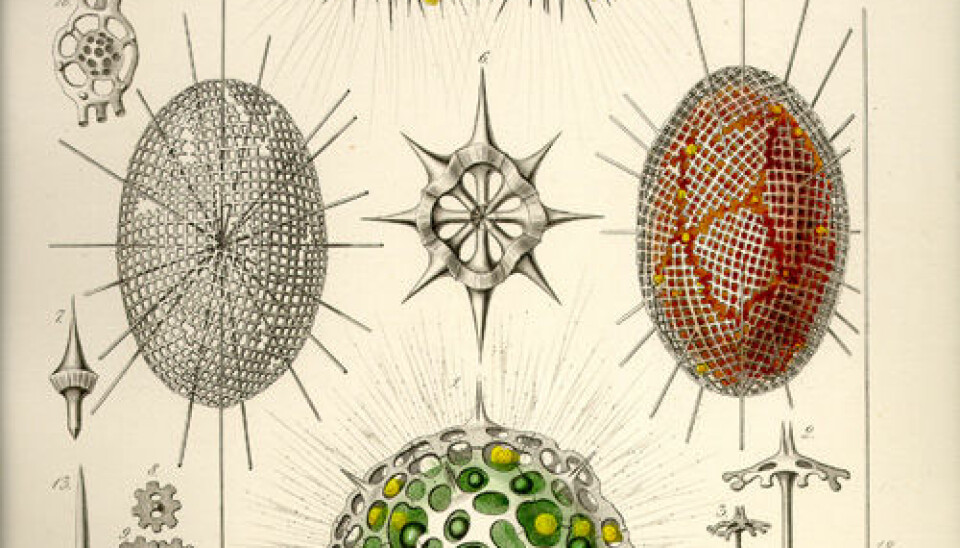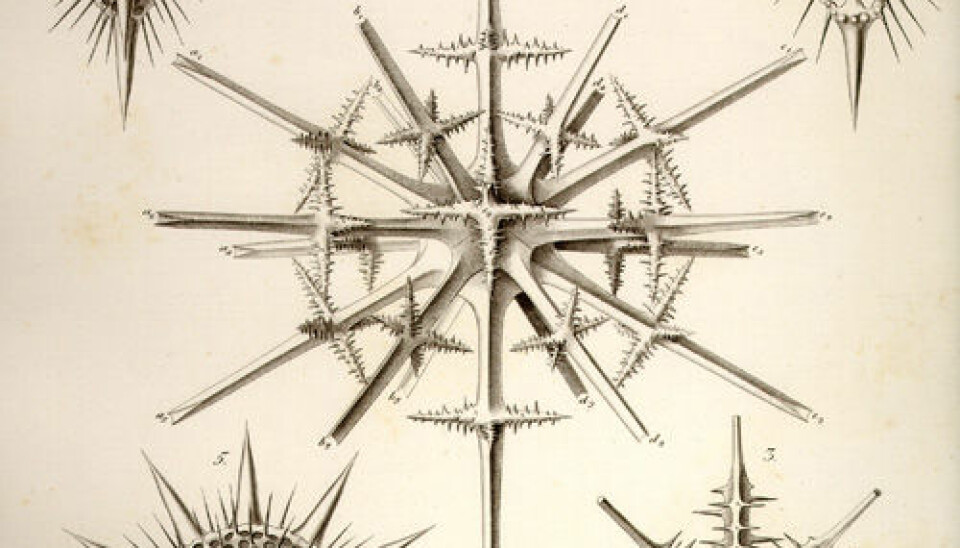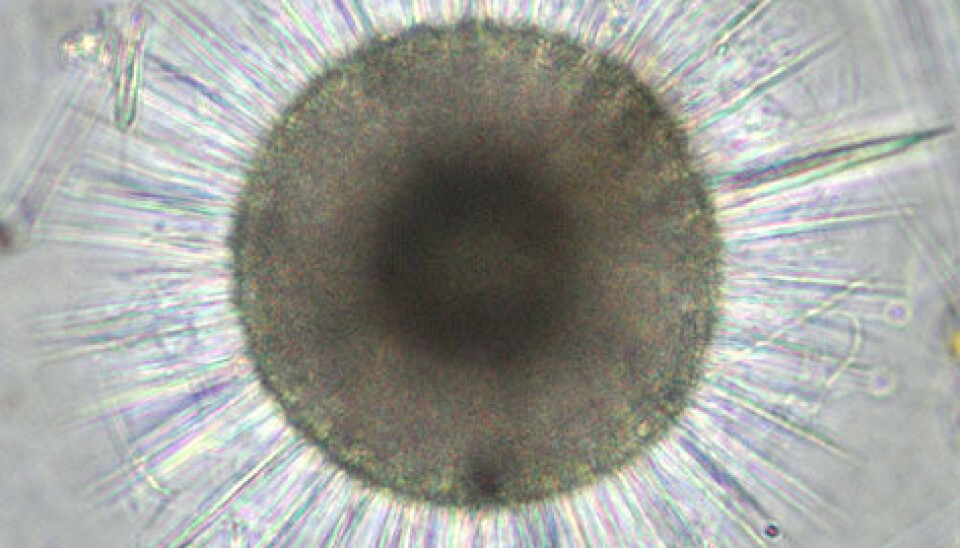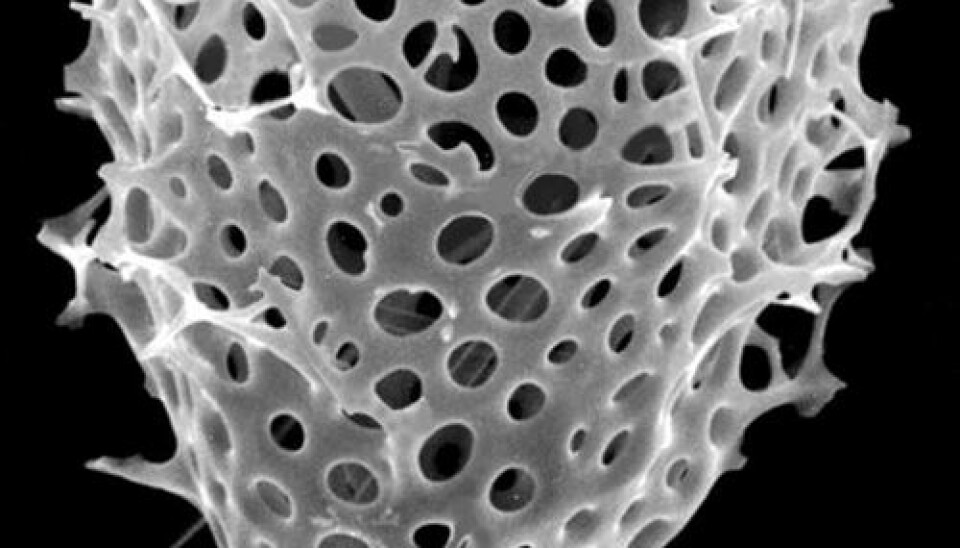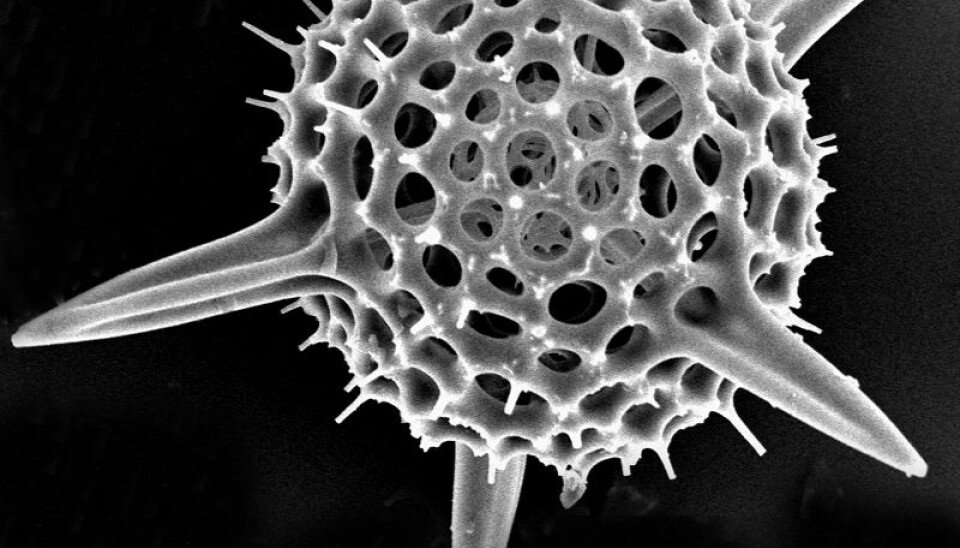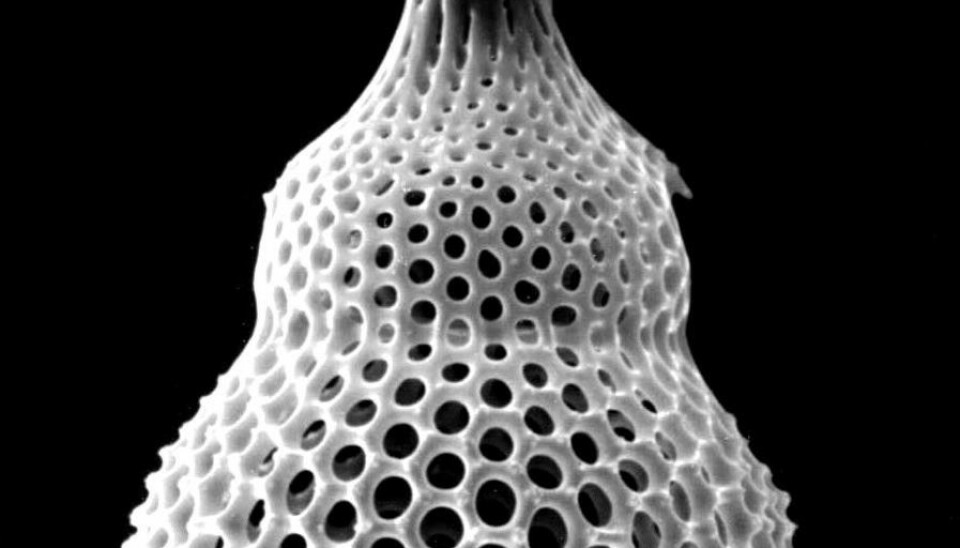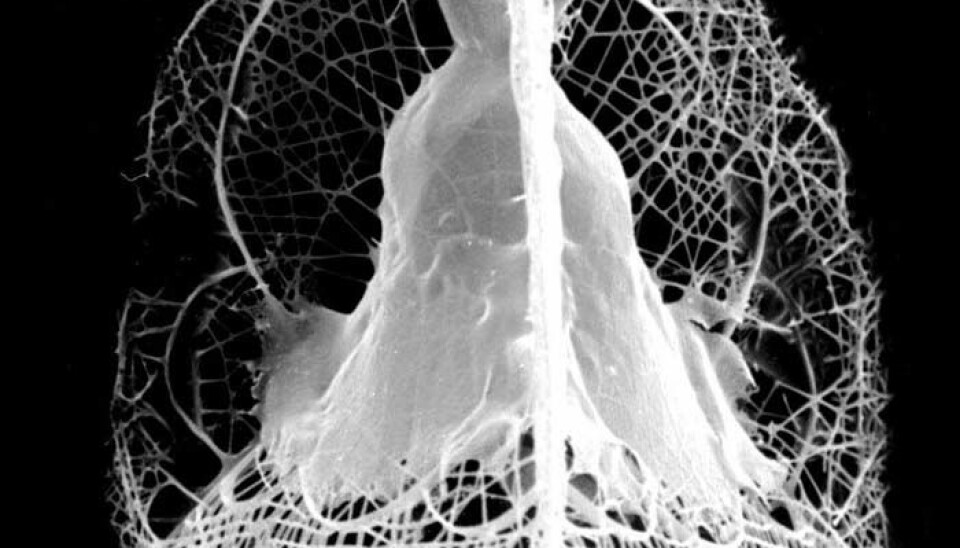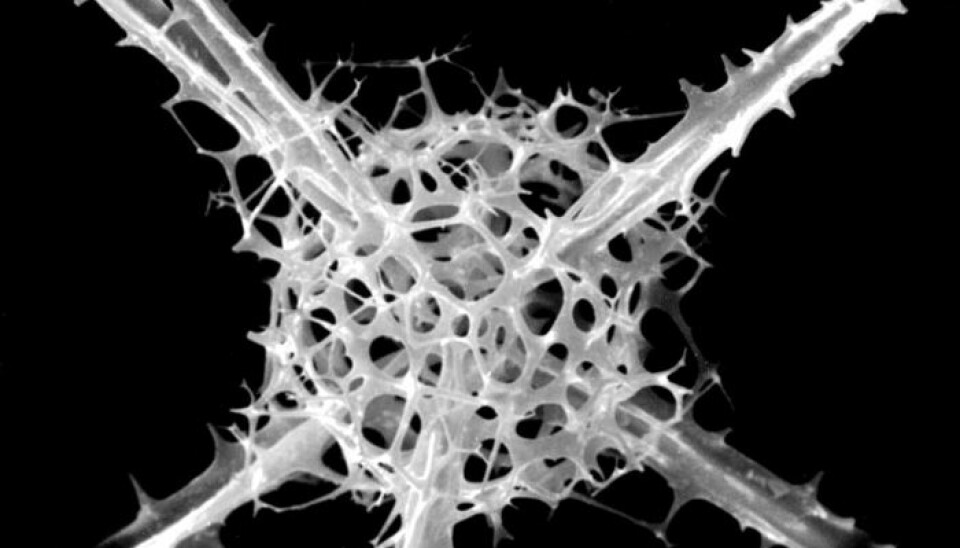
The secret life of the sea
The ocean is teeming with tiny, exquisite creatures that have concealed themselves in certain ways from scientists. Now, 200 years after the organisms were discovered, Norwegian researchers have started to clear up mysteries from the DNA of radiolarians.
Denne artikkelen er over ti år gammel og kan inneholde utdatert informasjon.
The world is teeming with unknown life forms. In the seas, in the soil – yes even in a shovel full of earth from your garden –innumerable organisms thrive that haven’t been scientifically analyzed and described.
In the last decades researchers have developed new methods for investigating cells and analyzing genomes – the genetic instructions for all the living organisms on the planet. But that’s just a point of departure.
In order to map the DNA of an organism, scientists need to extract and copy the genetic material in the small cells. The problem is that 90 percent of microscopic life forms on the planet cannot be cultivated in laboratories.
Scientists don’t know what nutrients they need or which other organisms they need to live with symbiotically to survive. This makes DNA analyses all the harder to make.
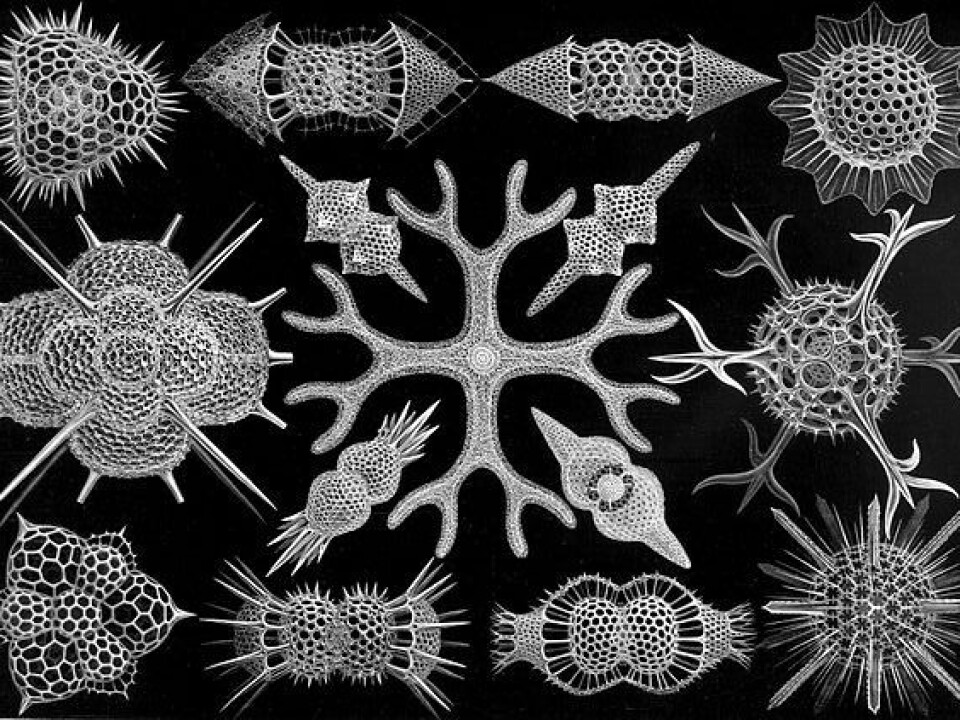
Radiolarians
Radiolarians are a group of creatures that are notoriously difficult to probe. These enigmatic unicellular organisms proliferate in all the oceans and come in myriads of varieties.
Radiolarians usually float around in the top 100 metres of the seas but can also be found at great depths. And they have been around for a long, long time – apparently about 600 million years.
Researchers know this because most radiolarians have a lacy exoskeleton. Each species is its own work of art. They can look like bells, stars, hats and Christmas tree ornaments. Ancient sea beds are full of tiny radiolarian skeletons from far back in time.
Since these little cuties were discovered about 200 years ago their skeletons have served as the basis of their classification. Biologists have reasoned that radiolarians with similar skeletons are related, and created lineage diagrams on that basis.
But they have bickered about the criteria for such charts. Analyses of small bits of DNA have turned up results that knock down former conclusions.
Retaining DNA
The era of subjective guessing is over, if we can believe the interdisciplinary Microbial Evolution Research Group (MERG) at the University of Oslo.
They’ve found a technique for extracting, cleaning and opening the microscopic radiolarians without destroying their contents. This allows scientists to obrtain the DNA on the inside of the individual cell, copy it and map the genome of the species. Their research was recently published in PLoS One.
“We’re learning to understand the relationship between several species by comparing them and thus getting an idea of how they evolved,” says Kamran Shalchian-Tabrizi, who heads up the team at MERG.
DNA can also tell something about the living conditions of the organisms, the researcher explains.
“Radiolarians probably have enormous genomes. But so far we’ve only found small sequences that are actual codes for proteins – in other words for concrete qualities. This means that the organisms have a lot of DNA that doesn’t serve as codes for proteins.”
Scientists don’t know yet what significance the non-coding genetic sequences have for the tiny creatures. But future research will reveal more of the radiolarians’ secrets.
The analyses have already spotlighted another ocean enigma.
Mysterious group
To get an overview of the contents of seawater researchers can study the assorted DNA they find in a water sample.
It’s possible to see what types of organisms live in the water by comparing DNA sequences in a sample with characteristic sequences of known groups, for instance fungi or algae.
But in such samples they nearly always find DNA from a group of mysterious creatures that are completely unknown, says Research Fellow Anders Kristian Krabberød, who also works at MERG.
“This group appears to comprise about 20% of all life in the seas and it’s magnificently diverse. But we don’t know what sort of organisms they are. These sequences are unlike anything we recognize from before.”
But studies of radiolarians have provided new clues.
“In our analyses of radiolarians we also find DNA from other organisms – cells that live as parasites inside them. These appear to be like the DNA sequences from the unknown group.”
Reservoir
When the mysterious group of aquatic organisms was discovered 10 years ago, Shalchian-Tabrizi and his colleagues suspected they might be various parasitic species. But few other biologists concurred.
Now it might look like they were onto something after all.
“We actually think that the whole bunch could be parasites or symbiotic organisms. We think radiolarians are likely to be the main reservoirs for such organisms, although a few such parasitic creatures are found in other animals, such as crustaceans and fish.”
Major challenges
The small cells inside radiolarians, fish and crustaceans can also tell us something about the challenges that life has encountered across the aeons. The parasite cells in fish and crustaceans for instance appear to be quite different from the ones inside radiolarians,” explains Shalchian-Tabrizi.
This indicates that the parasitic cells are not readily capable of changing hosts. Perhaps they have only managed to jump over to another fish or crustacean once or just a few times during their lengthy span of evolution.
All the species that now live inside these animals are the descendents of these “jumpers”, and will be completely different than the parasites that are still inside radiolarians.
Cooperation
Concealed in the tiny life forms floating around in water is an enormous amount of information that has now become available to science, much to the delight of Shalchian-Tabrizi.
“We started from scratch with a 200-year-old unresolved problem and managed to put together a group of professionals from different areas of research: palaeontologists, biochemists and IT specialists. Without this multidisciplinary competence we would have never found the solution.”
_________________________________________
Read this article in Norwegian at forskning.no
Translated by: Glenn Ostling
Scientific links
External links
- Tree of life: Radiolarians
- radiolaria.org
- Ernst Haeckel: Die Radiolarien, 1862
- Microbial Evolution Research Group (MERG)








